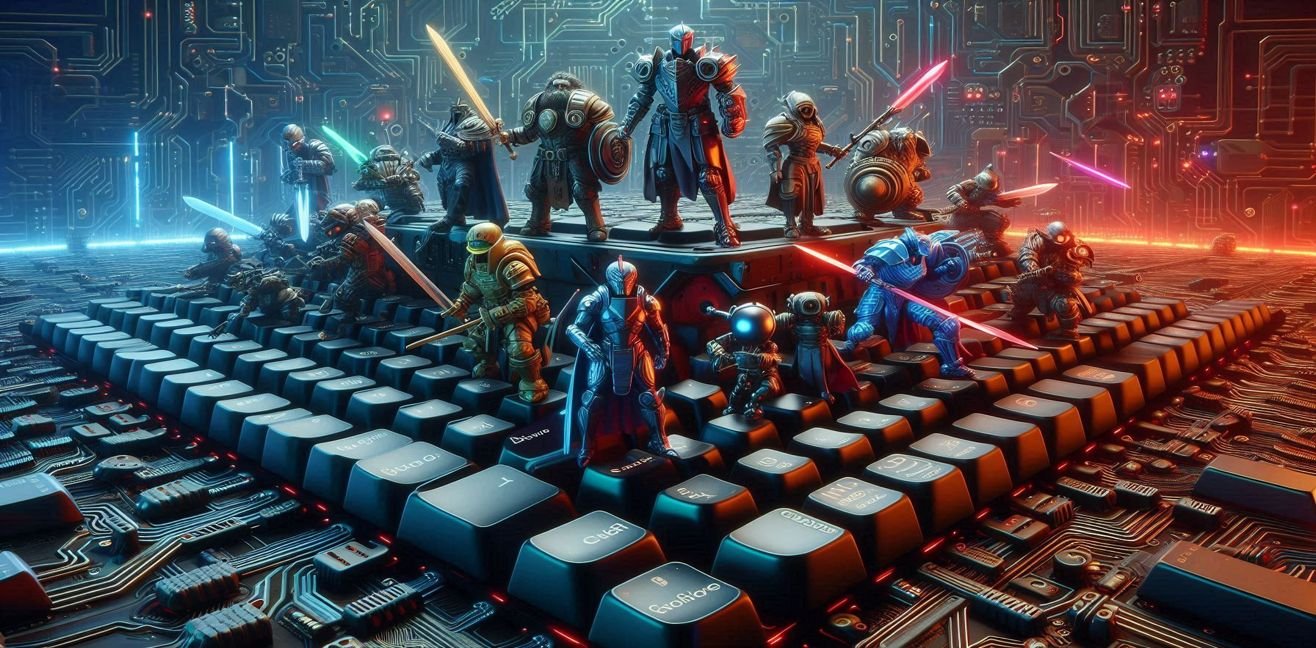Hello, dear tech warriors and keyboard heroes! 💻⚡ Today, we’re diving into the hidden champions of your computer: keys and switches. Yes, my love, every key is a soldier—some never get tired, while others quickly fatigue in long battles. Ready? Let’s enter the unknown frontlines of the keyboard world.
🎯 Mechanical vs Membrane: The Clash of Keys
In the keyboard world, there are two major armies: mechanical switches and membrane switches. The difference isn’t just in feel—it’s also critical for performance and durability.
1. Mechanical Switches
- Each key has its own individual switch—a mini electronic sensor per key.
- Switch Types and Characteristics:
- Cherry MX Red: Linear, quiet, low actuation force (~45g). A gaming hero, ideal for fast responses.
- Cherry MX Blue: Clicky and tactile, actuation force ~50-60g. Enjoyable for typing, but may annoy some during gaming.
- Cherry MX Brown: Light tactile, actuation ~45g. Balanced for both typing and gaming.
- Durability: Can withstand up to 50 million keystrokes. Yes, some keys are almost immortal!
- Extra Features: Anti-ghosting and N-key rollover prevent simultaneous key presses from interfering, crucial for survival in gaming battles.
💡 Humorous Note: “Every key is a hero, some tire faster than others. Red switches are marathon runners, Blue switches are sprinters.”
2. Membrane Switches
- Keys work through a single rubber membrane.
- Softer, quieter, and cheaper.
- In long battles (gaming marathons), they fatigue faster.
- Great for typing, but slightly slower for fast-response gaming.
⚡ Key Durability and Performance Analysis
- Actuation Distance: Distance a key travels before registering. Mechanical: 2–2.5 mm, Membrane: 3–4 mm. Shorter distance = faster response.
- Actuation Force: Mechanical: 45–60g, Membrane: 50–70g. Lower force = less fatigue.
- Lifespan: Mechanical ~50 million keystrokes, Membrane ~5–10 million. Some membrane keys might only last you 6 months 😅.
- Tactical Advantages:
- Mechanical switches optimize both gaming and typing performance.
- Membrane switches are quieter and sufficient for everyday use.
🛡️ Ergonomics and Long-Term Use
- Split Keyboards & Ergonomic Designs: Protect fingers and wrists; enhance performance in long sessions.
- Keycap Materials: ABS vs PBT. PBT is more durable and resists shine.
- Anti-Ghosting & N-Key Rollover: Prevents conflicts from multiple key presses, a lifesaver in FPS and MOBA games.
💡 Humorous Tip: “Want to game 10 hours without breaking your finger? Pick a mechanical switch hero; membranes are a bit lazy.”
🧹 Keyboard Maintenance: Keep the Heroes Alive
- Dust & Crumb Protection: Keys get sluggish when dirty.
- Keycap Cleaning: Keeps your heroes in top shape.
- Switch Lubing: Mechanical switches become smoother and quieter.
💡 Funny Note: “If your keyboard is dirty, keys may rebel—and you’ll cry over it before your morning coffee.”
😂 Humorous Perspective
- Every key has a personality: some are fast, some heavy.
- During long typing sessions, feel the mood of the keys: “Why is this key betraying me?”
- Keys are your soldiers on the battlefield. Neglect them, and the battle is lost.
🌟 Conclusion
A keyboard isn’t just an input device—it’s a battlefield. Choosing the right switch, knowing each key’s personality, and taking care of them is the key to surviving the computer wars.
Remember:
👉 Mechanical switches = army of durable heroes
👉 Membrane switches = sweet but quickly tiring soldiers
👉 Every key = a warrior, and you are their commander!




